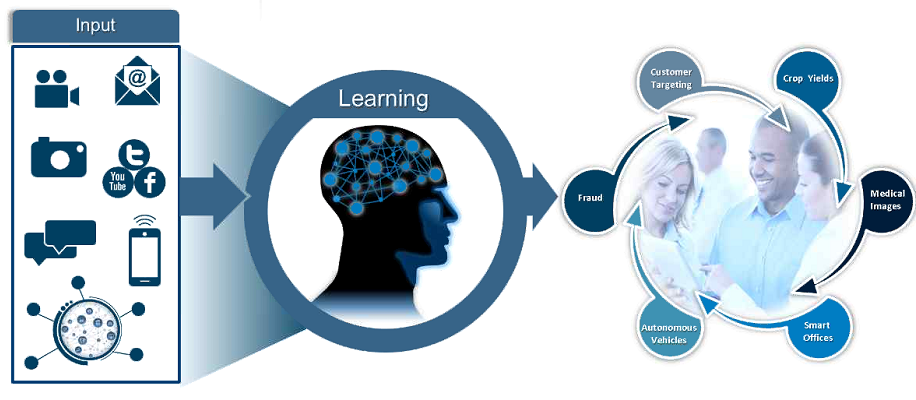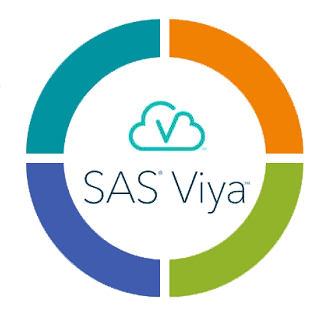
SAS Goes Back to the Future of Cognitive Computing with Viya

SAS yesterday unveiled plans to bolster its entire product lineup under the new Viya architecture with hefty doses of cognitive computing in an effort to make the software easier to use, more responsive to human input, and able to learn from experience.
While the company is talking up its cognitive plans as if it’s something new, the company also acknowledges that it’s actually been doing cognitive computing for decades. This has mostly been in the form of natural language processing (NLP), text analytics, and data mining solutions based on structured data.
What’s different now is the addition of deep learning, which is being driven by huge training data sets and massive amounts of computation capabilities, said SAS Chief Data Scientist Wayne Thompson.
“There’s no doubt that cognitive is here, and we’ve been doing it for a long time,” Thompson said in a press conference at the SAS Analytics Experience conference being held this week in Las Vegas, Nevada. “We want to embed cognitive into more products.”
Specifically, SAS is moving to incorporate more unstructured data into its cognitive computing capabilities, including sources like audio, voice, images, and geo-location. In the long run, SAS hopes to expose its cognitive capabilities to software developers via APIs.
In the future, SAS’ advanced analytics tools will feature more conversational interfaces, including voice-directed commands. They’ll also be better able to anticipate the wants and needs of its users, Thompson said.

SAS sees a variety of applications for cognitive computing in its analytics applications.
“Our mission, our vision, at SAS is simple: Not just one software package, but all of our software should be able to reason on input,” he said. “If I open up a spreadsheet in Excel, what do you get? Rows and columns of data. It doesn’t tell you a whole lot. Why can’t the computer tell you about something about that automatically, such as ‘Salaries look higher this year than last year, and projected sales also look up’?
“As soon as you touch the data,” Thompson continued, “the software should give you some kind of interaction–even if it’s a something simple in BI tool, such as make that a scatter plot and make the dots a diamond.”
But cognitive computing opens up a whole slew of possibilities, most of which haven’t even been thought up yet. Possible new solutions enabled by widespread availability of cognitive computing range from the rather mundane (like a parking lot app that automatically tells customers where the last remaining open parking spots are) to life-or-death (a healthcare app that automatically detects signs of viral pandemics).
Better healthcare analytics is one of the big drivers of cognitive at the moment, said Thompson, in addition to routing calls in contact centers, which SAS itself.
“Hopefully, with cognitive computing and being able to do trend analysis better, especially with things like recurrent networks and so forth, we can stop things like Ebola and Zika from happening so quickly that they devastate an entire country,” Thompson said. “Ebola and Zika appeared suddenly. They’re very dangerous. They’re almost catastrophic.”
Viya Now GA
The North Carolina company unveiled several other tools at the show, including Visual Data Mining and Machine Learning, and Visual Investigator. Both of these tools are based on Viya, the new “open, cloud-ready” platform that it unveiled earlier this year, as well as the latest SAS 9.4 codebase.
SAS Visual Data Mining and Machine Learning (or VDMML) is designed to help developers utilize the power of advanced algorithms and data models to identify insights in big data sets.
What does it include? According to Robert Moreira, senior product marketing manager for advanced analytics, VDMML is an end-to-end tool that provides everything a budding data scientist needs, from data preparation and data wrangling to feature engineering and model building.
“It does things like feature engine, principal component analysis and cluster analysis,” he said during the SAS press conference. “We’ll do all types of types of statistical and linear models, generalized linear models, down to more advance things, like random forests, support vector machines, Gradient Boosting, and neural nets.
“One of my favorite features is the ability to do auto tuning,” Moreira said “The whole concept of that is to make the data scientist, who are high in demand and change jobs quickly, as productive as possible. So instead of going in and tuning a neural network that’s got a ton of hidden layers, we can say, run it through an optimization engine and find best combination of parameter to get most accurate model possible.”
We can theorize that VDMML will gain more cognitive capabilities in the future. In the meantime, customers will have to suffice themselves with the capability to call VDMML capabilities from a variety of languages, which is one of the new features common to all SAS products via the new Viya platform.
“We don’t care what environment you want to run your machine learning algorithms in,” Moreira said. “Whether it’s SAS, Java, Lua, or Python, you develop these models, and you’ll be able to call these powerful SAS analytics from this environment. …We don’t care what language you learn.”
Meanwhile, SAS is hoping to help data engineers pull everything required for a data-driven application together with Visual Investigator, one of the new SAS Viya-based products unveiled this week.
If a data scientist at a SAS shop developed a new fraud-detection model with VDMML, Visual Investigator will help the analyst and operations team deploy that model into the real world. And once it’s live, Visual Investigator’s graphical interfaces will help them monitor how it’s working.
“Complex and disparate data can really slow down investigators,” said Brooke Fortson, a product marketing manager for Data Science and Emerging Technologies at SAS. “SAS Visual Investigator alleviates these challenges by bringing together data and exposing patterns of interest.”
Related Items:
SAS Takes on Spark with In-Memory Analytics for Hadoop
Rating the Advanced Analytics Vendors


























